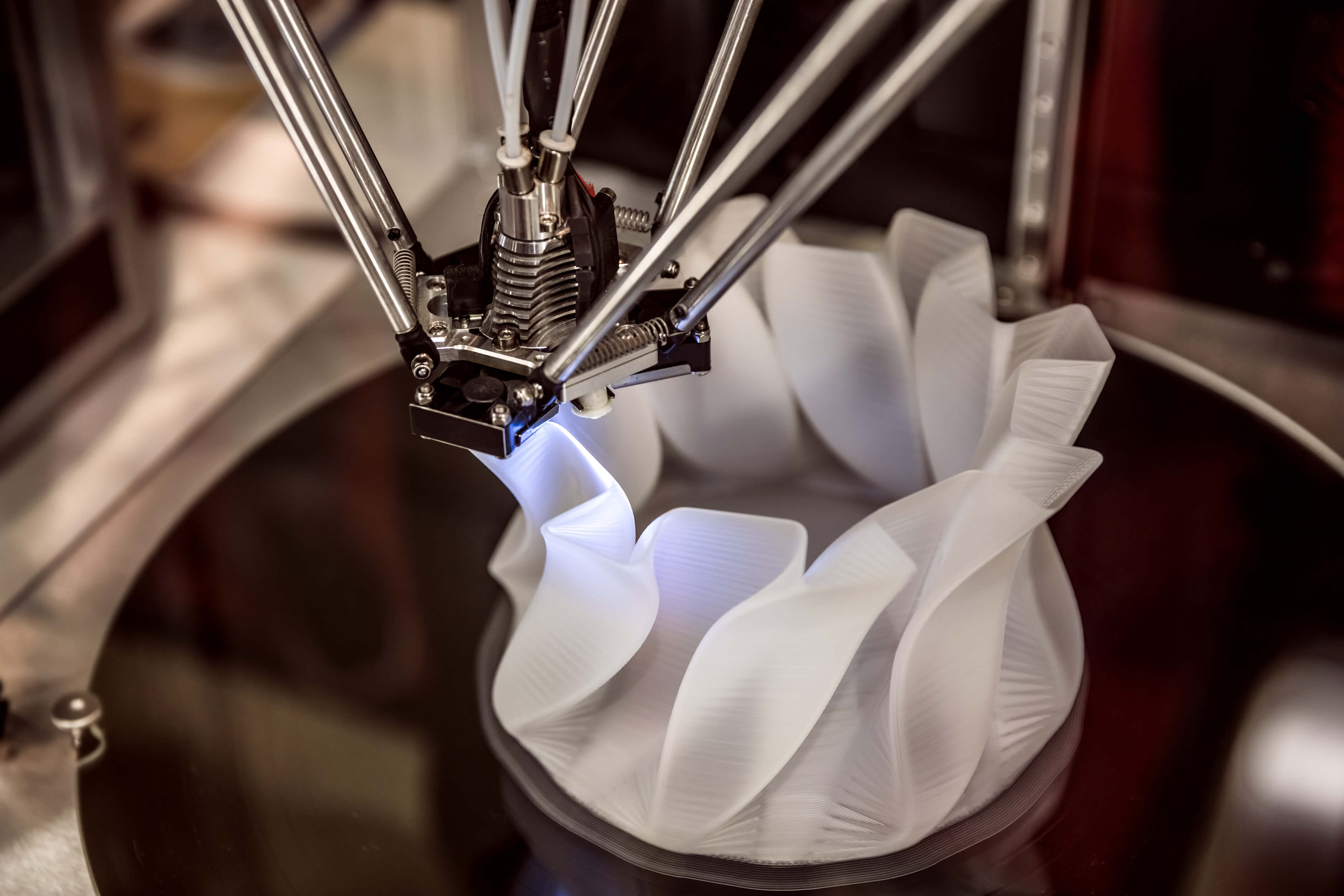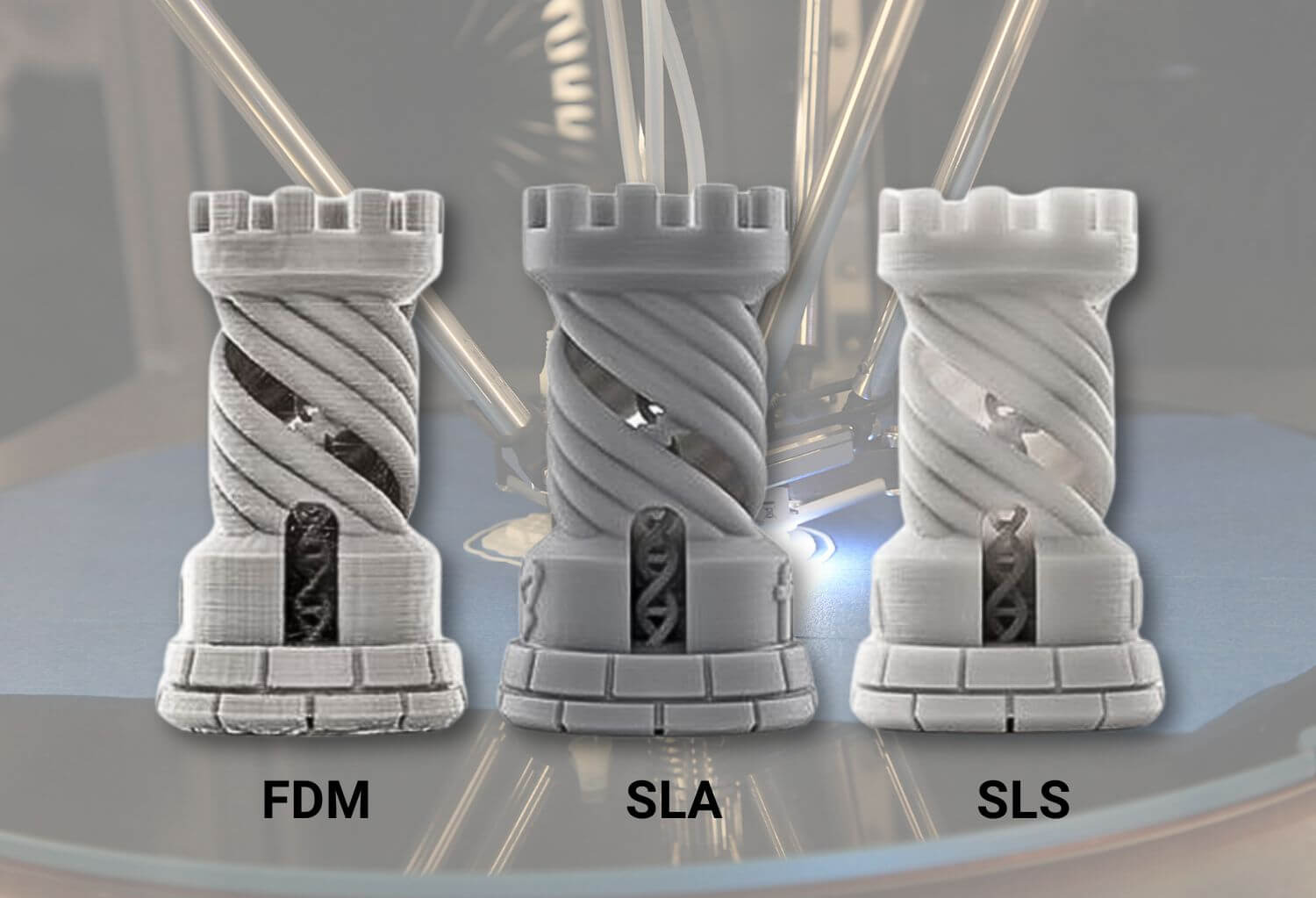
Explore SLS for prototypes, FDM for affordability, and SLA for precision in 3D printing. Choose based on project requirements, material, strength, speed, ease, cost, and user expertise.
SLS vs. FDM vs. SLA 3D Printing: The Key Differences & Applications
3D printing has revolutionized manufacturing, offering a choice between various technologies like Fused Deposition Modeling (FDM), Selective Laser Sintering (SLS), and Stereolithography (SLA). Each method presents different advantages and applications.
In this article, we will explore the key differences and applications of these three popular 3D printing technologies.
SLS 3D PRINTING
SLS, or Selective Laser Sintering utilizes a high-power laser to sinter polymer powder, eliminating the need for support structures. Nylon is a commonly used material in SLS, offering design freedom and enhanced dimensional accuracy.
This technology finds applications in functional prototyping, low-volume production, and custom manufacturing.
FDM 3D PRINTING
FDM, falling under material extrusion, employs thermoplastic filaments like ABS, PET, and PLA. Recognized for its simplicity and speed, FDM is a cost-effective choice for individuals and enterprises alike. Although widely used for product prototypes, FDM may not be the best fit for high-precision parts or intricate designs due to limitations in dimensional accuracy.
SLA 3D PRINTING
Belonging to vat photopolymerization, SLA cures photopolymer resin layer by layer using UV lasers. Despite requiring support structures, SLA produces parts with a smooth surface finish and high accuracy. Widely used in functional prototyping, SLA also assists manufacturers in creating patterns, tooling, and molds.

3D PRINTING TECHNOLOGY COMPARISON
OPERATION PRINCIPLE
Each technology operates on distinct principles – FDM melts thermoplastic, SLS sinters polymer powder with a laser, and SLA cures resin using UV lasers. These principles directly influence the strengths and limitations of each method.
MATERIAL OPTIONS
Material options differ significantly, with FDM utilizing thermoplastic filaments, SLS requiring powdered polymers like nylon materials, and SLA using photocurable liquid materials. The choice of technology determines the available material options.
SUPPORT STRUCTURE
SLS eliminates the need for support structures, providing design freedom, while FDM and SLA require them. Each method demands careful consideration of support materials and techniques during project planning.
PRINT VOLUME
Print volume varies among desktop FDM, benchtop SLS, and benchtop SLA printers. The selection of the appropriate technology depends on project requirements, emphasizing the critical need for careful consideration of the necessary print volume to ensure compatibility and efficiency in meeting specific project demands.
TENSILE STRENGTH
Research indicates that FDM has the potential to yield parts with superior tensile strength compared to SLS and SLA. The key lies in comprehending the precise strength criteria necessary for your project, as this understanding is highly important in selecting the most fitting 3D printing technology.
Matching the technology with the specific strength requirements ensures optimal results and functionality for the intended application.
POST-PROCESSING
Selective Laser Sintering (SLS) stands out for its streamlined post-processing, involving tasks such as dusting and washing. In contrast, FDM and SLA entail more intricate post-processing procedures.
FDM involves dissolving support structures, adding a layer of complexity, while SLA requires the application of UV acrylic paint.
The varying post-processing requirements highlight the trade-offs that users need to consider when choosing between these 3D printing technologies, weighing simplicity against the need for detailed finishing touches.
PRINTING SPEED
FDM and SLA are known for their efficiency in minimizing lead time, while SLS distinguishes itself by eliminating time-consuming post-processing tasks.
The selection among these technologies hinges on achieving a delicate equilibrium between printing speed and the level of post-processing involved, with users weighing the trade-offs based on their specific project requirements and priorities.
EASE OF USE
FDM is preferred for its user-friendly interface, making it an ideal choice for beginners, whereas the operation of SLS requires skilled technicians. SLA falls in the middle, demanding a moderate level of training.
The accessibility of these technologies plays an important role for both individuals and enterprises considering 3D printing, as ease of use remains an important factor in the decision-making process.
PRINTING COST
FDM's cost-effectiveness has made it a favourite among students and hobbyists, allowing for widespread adoption in these communities. In contrast, Selective Laser Sintering (SLS), with its larger scale and higher cost, addresses the specific demands of industrial applications.
Positioned between FDM and SLS, Stereolithography (SLA) strikes a balance, but the overall expenses are influenced by resin costs. This places SLA as a middle-ground option for those seeking a compromise between precision and budget considerations.
INSTALLATION BASE
FDM is widely adopted by individuals and enterprises due to its expansive installation base, offering versatility for various applications. Meanwhile, industries emphasizing functional parts and prototypes favour Selective Laser Sintering (SLS) and Stereolithography (SLA).
These technologies excel in meeting the precision demands of specific sectors, providing tailored solutions for industrial needs in the creation of functional components and prototypes.
FINAL TAKEAWAYS
The shift from subtractive to additive manufacturing is simplified by FDM, SLS, and SLA 3D printing technologies. Choosing the right technology and filament is important for quality outcomes.
Through a comprehensive 3D printing technology comparison, considering factors like operation principle, print volume, material options, and support structures, you can align your choice with project requirements.
Professional 3D printing services provide a practical way for companies to have their goals achieved, ensuring optimal results without incurring excessive costs.
